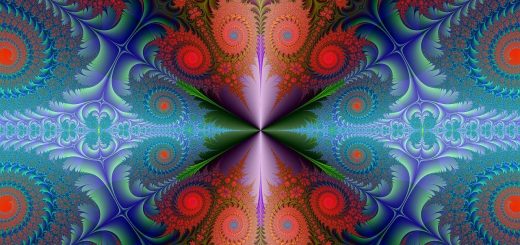Vajrayana: The Sacred Vajra of Tibetan Buddhism

Hey there, amazing readers! 🖐️ Just a quick note: yes, we know there are a lot of ads here. Trust us, we get it—it’s not the prettiest look, but they help us keep this blog alive and kicking. Those pesky little ads cover the costs of all the behind-the-scenes magic, from hosting and tech stuff to creating content we hope you’ll love.
We’re committed to delivering quality posts, and your support (even just sticking around despite the ads) means everything to us. So, bear with us, and thanks for helping us keep the good vibes rolling. Now, on to the fun stuff! 😉
TRANSLATE BUTTON AT THE END OF THE ARTICLE
A Quick Overview
Vajrayana, also known as Tantric Buddhism, is a complex and esoteric form of Buddhism that emphasizes the use of rituals, symbols, and mantras to achieve enlightenment.
At the heart of Vajrayana practice is the sacred Vajra, a symbol that represents the indestructible nature of reality and the union of wisdom and compassion.
Originating in India and later adopted in Tibetan Buddhism, the Vajra holds deep significance in Vajrayana rituals and ceremonies.
Understanding Vajrayana Buddhism
Vajrayana is considered the highest form of Buddhism, as it incorporates both Mahayana and Theravada teachings along with tantric practices.
It is based on the belief that enlightenment can be achieved in a single lifetime, through the use of specific rituals and meditation practices.
Vajrayana practitioners aim to attain enlightenment not only for themselves but for the benefit of all beings.
Origins of the Vajra Symbol
The Vajra symbol has its roots in ancient Indian mythology and Hinduism, where it was associated with lightning and the thunderbolt.
In Buddhism, the Vajra represents the indestructible essence of reality, symbolizing the unchanging nature of enlightenment.
The word "Vajra" itself translates to "diamond" or "thunderbolt" in Sanskrit, emphasizing the unbreakable and powerful qualities of this symbol.
Symbolism of the Vajra
The Vajra is often depicted as a diamond-like object with five or nine prongs, symbolizing the five elements and the five Buddha families.
It is said to possess the power to destroy ignorance and delusion while simultaneously revealing the true nature of reality.
The Vajra also represents the union of wisdom and compassion, as well as the unification of the dualistic aspects of the mind.
The Vajra in Tibetan Buddhism
In Tibetan Buddhism, the Vajra holds a central place in ritual practices and ceremonies.
It is used by high lamas and practitioners as a symbolic tool to invoke the blessings of the Buddhas and to purify the mind.
The Vajra is often paired with the Bell (Ghanta), symbolizing the union of wisdom and compassion in the practice of Vajrayana.
Ritual Use of the Vajra
During Vajrayana rituals, the Vajra is used to consecrate offerings, blessings, and empowerments.
It is also used to mark the visualization of deities and to invoke the protection of the Buddhas and Bodhisattvas.
The Vajra is considered a powerful tool for transformation, aiding practitioners in their journey towards enlightenment.
Importance of the Vajrayana Tradition
Vajrayana is a unique and profound tradition that offers a direct path to enlightenment through the skillful use of symbols, mantras, and rituals.
It emphasizes the integration of all aspects of one’s being, including the physical, emotional, and spiritual dimensions.
The Vajra serves as a reminder of the ultimate goal of Vajrayana practice, which is to realize the true nature of reality and attain liberation from suffering.
The Five Buddha Families
The Vajra is closely associated with the concept of the Five Buddha Families, which represent different qualities of enlightened mind.
Each Buddha family is linked to a specific Vajra family, symbolizing the transformation of negative qualities into enlightened wisdom.
The Five Buddha Families are:
Vairochana Buddha Family (Vajra Family): Represents the transformation of ignorance into the wisdom of reality.
Akshobhya Buddha Family (Ratna Family): Represents the transformation of pride into the wisdom of equanimity.
Ratnasambhava Buddha Family (Padma Family): Represents the transformation of greed into the wisdom of generosity.
Amitabha Buddha Family (Karma Family): Represents the transformation of attachment into the wisdom of discernment.
Amoghasiddhi Buddha Family (Buddha Family): Represents the transformation of aggression into the wisdom of accomplishment.
The Vajra as a Tool for Transformation
In Vajrayana practice, the Vajra is used as a tool for transforming the practitioner’s mind and purifying negative emotions.
By visualizing the Vajra and reciting relevant mantras, practitioners can cultivate positive qualities and overcome obstacles on the path to enlightenment.
The Vajra serves as a symbolic reminder of the practitioner’s inherent Buddha nature and the potential for transformation within each individual.
Vajrayana Practices and Mantras
Vajrayana practices often involve the recitation of specific mantras associated with the Vajra and the Five Buddha Families.
Mantras are sacred sounds or phrases that carry spiritual power and can lead to realization and enlightenment when chanted with devotion and mindfulness.
By reciting mantras such as the Vajra Guru Mantra or the Vajra Family Mantras, practitioners can connect with the divine energies of the Buddhas and receive their blessings.
Empowerment and Initiation in Vajrayana
Empowerment (Wang in Tibetan) and initiation are key components of Vajrayana practice, where a qualified teacher transmits the blessings and instructions of a specific deity or practice to the student.
Through empowerment, the practitioner receives the spiritual authority and blessings necessary to engage in tantric practices effectively.
Initiation rituals often involve the presentation of the Vajra and other sacred implements, symbolizing the transmission of wisdom and empowerment from teacher to student.
The Vajra as a Symbol of Power
The Vajra is often seen as a symbol of power and protection in Vajrayana Buddhism.
It is believed to possess the ability to overcome obstacles, dispel negative energies, and protect the practitioner from harm.
The Vajra’s diamond-like qualities represent the indestructible nature of enlightened wisdom, offering practitioners a sense of strength and resilience in their spiritual journey.
The Vajra: Protector and Purifier
In Vajrayana practice, the Vajra is revered as a symbol of purification and transformation.
It is used to purify negative karma, dispel obstacles, and protect the practitioner from spiritual harm.
The Vajra’s ability to cut through ignorance and delusion is seen as a powerful tool for awakening and enlightenment.
By incorporating the Vajra into their practice, practitioners can harness its transformative energy and deepen their connection to the enlightened qualities it represents.
Conclusion
The Vajra is a sacred symbol with deep spiritual significance in Tibetan Buddhism and Vajrayana practice.
As a powerful tool for transformation and enlightenment, the Vajra serves as a reminder of the practitioner’s inherent Buddha nature and the potential for awakening within each individual.
By understanding the symbolism and ritual use of the Vajra, practitioners can deepen their spiritual practice and cultivate wisdom and compassion on the path to enlightenment.
Whether used as a symbol of power, protection, or purification, the Vajra remains a central and revered symbol in Vajrayana Buddhism.

The Enlightenment Journey is a remarkable collection of writings authored by a distinguished group of experts in the fields of spirituality, new age, and esoteric knowledge.
This anthology features a diverse assembly of well-experienced authors who bring their profound insights and credible perspectives to the forefront.
Each contributor possesses a wealth of knowledge and wisdom, making them authorities in their respective domains.
Together, they offer readers a transformative journey into the realms of spiritual growth, self-discovery, and esoteric enlightenment.
The Enlightenment Journey is a testament to the collective expertise of these luminaries, providing readers with a rich tapestry of ideas and information to illuminate their spiritual path.
Our Diverse Expertise 🌟
While our primary focus is on spirituality and esotericism, we are equally passionate about exploring a wide range of other topics and niches 🌍📚. Our experienced team is dedicated to delivering high-quality, informative content across various subjects ✨.
To ensure we provide the most accurate and valuable insights, we collaborate with trusted experts in their respective domains 🧑🏫👩🏫. This allows us to offer well-rounded perspectives and knowledge to our readers.
Our blog originally focused on spirituality and metaphysics, but we’ve since expanded to cover a wide range of niches. Don’t worry—we continue to publish a lot of articles on spirituality! Frequently visit our blog to explore our diverse content and stay tuned for more insightful reads.





